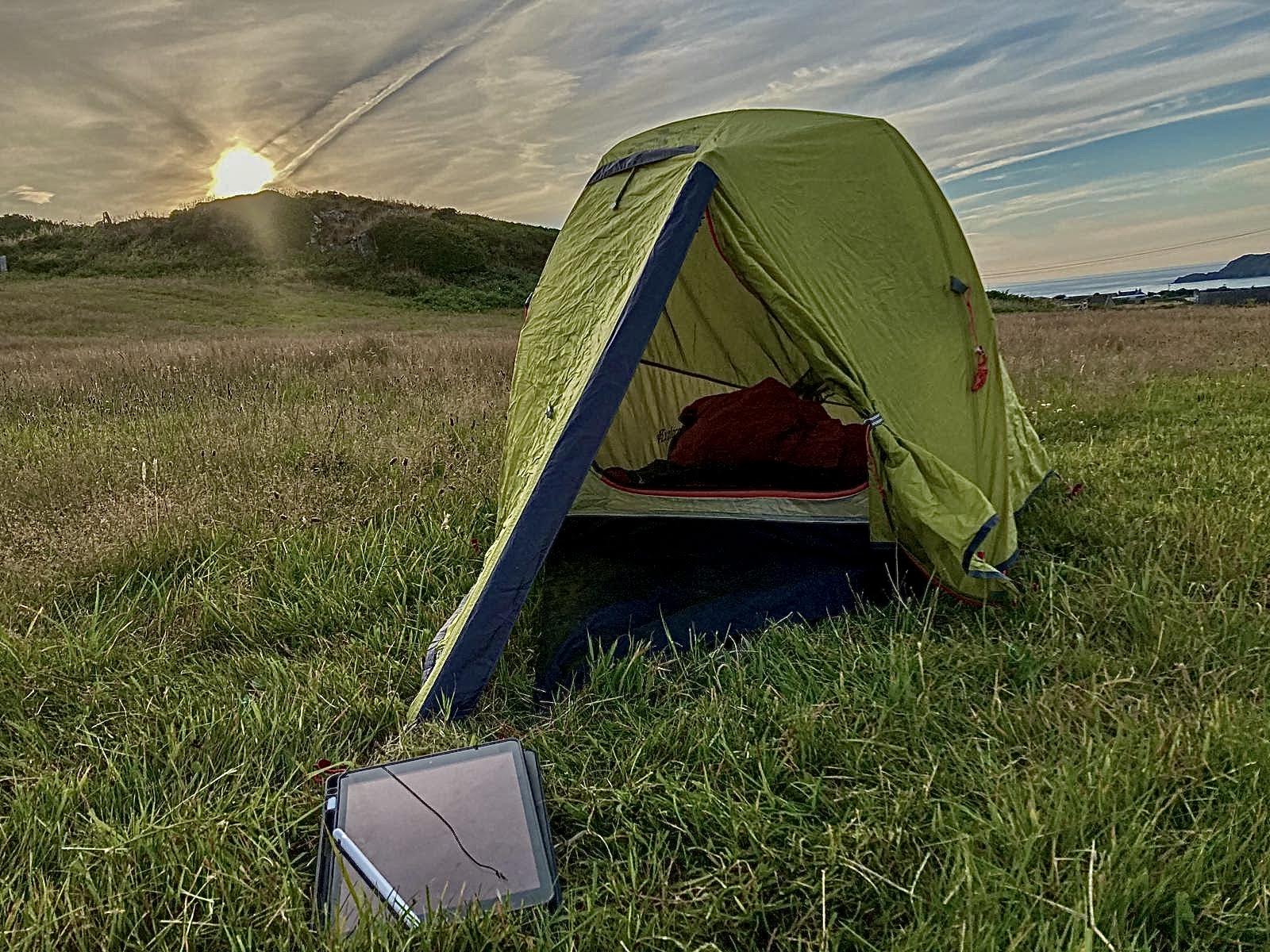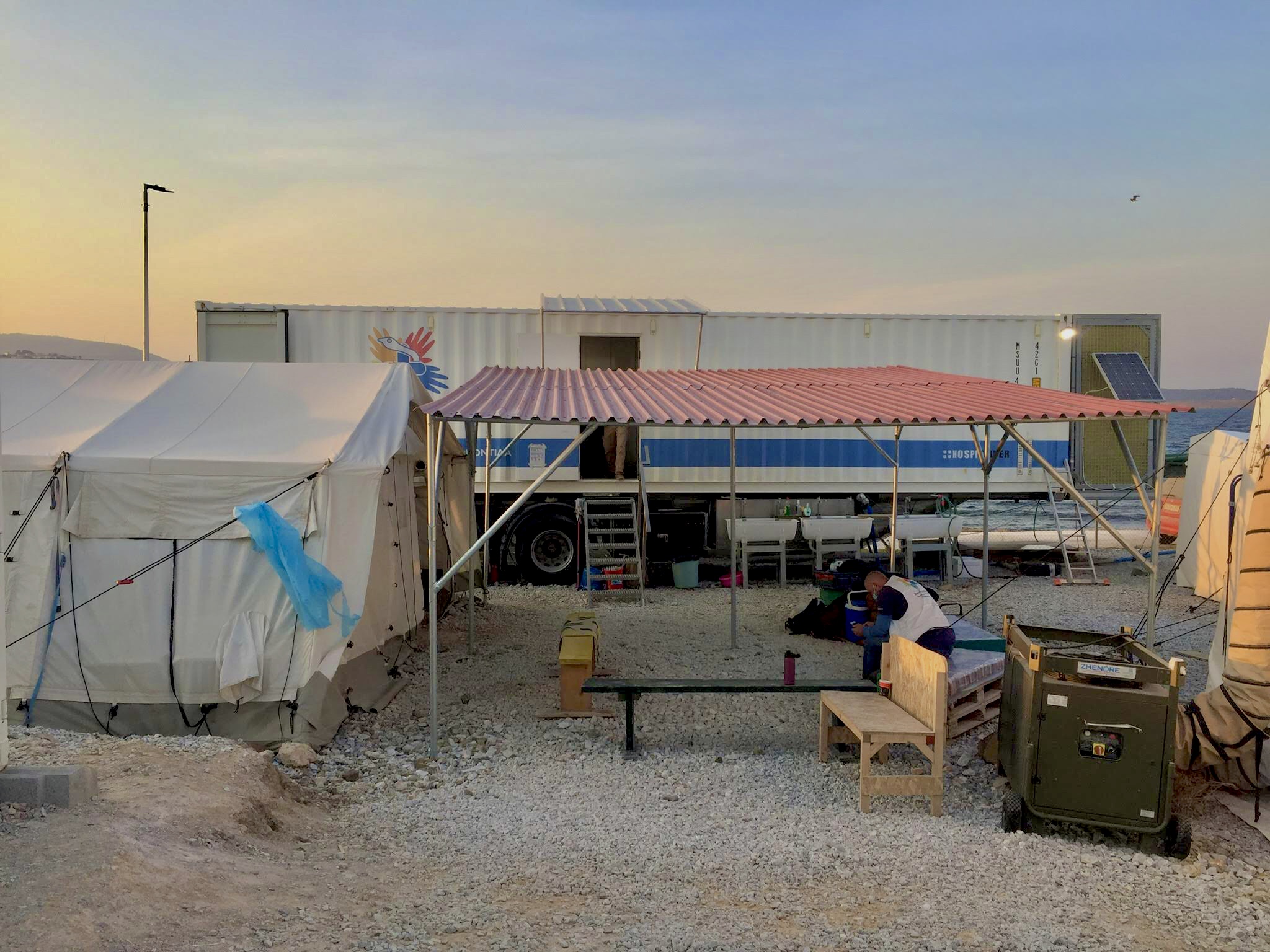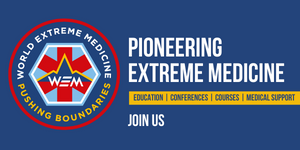Dr Holly Andrews / Anaesthetics trainee / Cornwall

- Introduction to Papers of the Quarter
- Expedition and Wilderness Medicine
- Global Health and Humanitarian Medicine
- The Adventure Medic reading list
Introduction to Papers of the Quarter
We practice in a culture of evidence based medicine and regularly share novel research, case based learning, clinical updates, guidelines and editorial discussions. The pandemic spawned a whole new level of information sharing that it seems to us should, and we hope will, continue into ‘non-pandemic’ times.
Leading busy lives seeking adventure around our medical work and with so many excellent peer-reviewed journals in the field, it can be a daunting task to keep up to date with so many new relevant publications.
Here at Adventure Medic we have been studying the top journals publishing in wilderness, expedition, adventure and humanitarian medicine and scanning the global health network for stand out articles to bring to your attention.
Perhaps you need some inspiration for a journal club? Not sure which journals in expedition medicine have the highest impact factor? Fancy some interesting reading other than the back of the cereal packet over breakfast? Then look no further for a quick, one-stop resource to tap into to what we think have been some of the most relevant articles published over the last quarter.
Being a new feature for us, we have, just this once, included some older articles and editorials that have been important in shaping the global health community over the past few years. However, we have mostly focused on the past quarter and will be doing so in future. It’s been a hard job cutting down to highlight just the select few – there’s a lot of quality reading out there, so we’ve included a list of the top journals and online resources that we use if you’re interested in catching up on their latest issue in a little more detail. As always, our text is hyperlinked for further reading and wonderfully almost all the journals are open access.
Please do get in contact if you think a particular publication should be added for the next quarter or indeed, if you’d like to get involved with contributing to this feature – we always look forward to hearing from you.
Happy reading!
Expedition and Wilderness Medicine

This quarter we highlight recent papers looking at multiple aspects of hypothermia management and published work on some commonly used treatment tools. We head up the mountain on terra firma analysing recent avalanche mortality data and launch off the top into an interesting report on paragliding accidents. An article on telemedicine and its role in the expedition community piqued our interest and we summarise it below, along with a piece from the EMJ summarising the evidence for immobilising distal radius fractures.
Clinical staging of accidental hypothermia: The Revised Swiss System
Musi M, Sheets A, Zafren K et al. Resuscitation. March 2021
Clinical staging of hypothermia is essential in guiding out-of-hospital treatment and evacuation decisions. The measurement of core temperature in the field is impractical and can cause further core temperature drop. The International Commission for Mountain Emergency Medicine (ICAR MedCom) have published an update to the classically used ‘Swiss Field Staging System’. They highlight the evidence base behind using conscious level as a sole determinant of staging, suggesting that all other physiological signs of hypothermia are too variable to be a reliable indicator of severity. They conclude by publishing their ‘Revised Swiss System’ which uses the AVPU scale and the absence or presence of vital signs to more accurately stage hypothermia in the field. Yet to be formally tested however, there is a research opportunity to pit their system against previous standards.
Thermodynamics of the Oral Treatment of Mild Hypothermia
Billin A. Wilderness Medical Society Magazine. June 2022
We often see groups of sea swimmers sitting cuddling a hot cup of tea on the shore in their dry robes but is it actually a useful clinical treatment option for hypothermic patients in the wilderness? Dr Aaron Billin, a master fellow of the Academy of Wilderness Medicine walks us through the calculations required to dose the amount of hot water drink to raise core body temperature. It turns out it’s rather a lot. His bottom line advises that hot drinks are unlikely to significantly raise core body temperature and that we should focus our management on the other core aims of treating hypothermia.
Wilderness Medical Society Clinical Practice Guidelines for the Out-of-Hospital Evaluation and Treatment of Accidental Hypothermia: 2019 Update
Dow G, Giesbrecht G, Danzl D et al. Wilderness and Environmental Medicine Journal. Dec 2019
The WMS and their expert panel from across the world have provided comprehensive, fully evidence based practical guidelines for the management of many commonly encountered conditions on expedition. Here they present an update on the evaluation and management of accidental hypothermia in a pre hospital environment. Not only are their guidelines easy to read and digest, they present their information alongside a grading system based on the quality of supporting evidence. Hypothermia can be a real risk on any expedition, in any environment and this guideline gives you the tools as a medic to mitigate the risks associated with it.
Quantifying risk in air sports: Flying activity and incident rates in paragliding
Wilkes M, Long G, Massey H et al. Wilderness and Environmental Medicine Journal. March 2022
Interesting results from a large scale survey on the risks of paragliding. Though some view it as high risk activity, the risks of paragliding have not been well-quantified until now. Results show that paragliding is approximately twice as risky as skydiving or flying a light aircraft and the majority of incidents result from pilot error rather than equipment failure. The authors advise that future safety interventions should focus on improving glider control skills and encouraging prompt reserve parachute deployment in emergencies. Food for thought for the paragliding community, those that run teaching and training and definitely a foundation for future research.
Prehospital use of ultrathin reflective foils
Kosinski S, Podsiadlo P, Darocha T et al. Wilderness and Expedition Medicine Journal. March 2022
Ultrathin reflective foils are marketed to protect patients against heat loss. Certainly they have become a ubiquitous image as a drape over athletes at the finishing line or around a casualty huddled on expedition. This paper reviews the physics of thermal insulation, debunks many of their uses and gives some clear guidance on the situations where they may or may not be a useful tool in managing hypothermia. The authors conclude that the heat reflecting property of the foil is relatively clinically insignificant and may in fact be detrimental if conditions allow condensation and freezing on the inner layer. They state that they may still play a role in hypothermia management when used in combination with other materials, particularly as a windproof layer but alone, they have much less benefit than we have been led to believe.
Avalanche preparedness and accident analysis among backcountry skier, sidecountry, and snowmobile fatalities in the United States: 2009 to 2019
Niemann D, Subrata P, Humairat R. Wilderness and Expedition Medicine Journal. April 2022
For those of us adventuring on skis in the backcountry avalanche forecasting and preparedness is ingrained into every trip but what about other risky activities on the snow? Analysis from over 200 avalanche fatalities in the US looked at different groups of backcountry users in the winter and what specific factors contributed to their fatalities. The results showed that those riding snowmobiles or those hiking or snowshoeing in the ‘side – country’ were less well prepared but equally as likely to be involved in an avalanche. A lesson for us all to be alert to the real possibility of avalanche as soon as we step into the back country regardless of the activity.
The intersection of telemedicine and wilderness care: past present and future
Davis C, Lorentzen A, Patel H et al. Wilderness and Expedition Medicine Journal. April 2022
As the telemedicine market begins to boom we often are left wondering how it will affect our working lives. Initial reactions are often of trepidation and anxiety at the unknown but this article explains how technological advances can be truly beneficial to the expedition medicine community. From the use of drones to access the previously inaccessible, to the application of remote consultations and patient monitoring we learn how telemedicine can add positively to care in austere environments.
Read more here from a fascinating recent article we published from Dr Isabel Straw on AI and its role in medicine.
BET 1: should Colles’ fractures be splinted in a long or short arm cast?
Ramsden S, Beals L. Emergency Medicine Journal. February 2022
A review by the emergency physicians of available evidence on the effectiveness of types of splint following distal radius fracture. Following reduction of a closed distal radius fracture the authors found that there is no benefit to splinting above the elbow. With a potential improvement in comfort and no negative impact to maintenance of reduction, below elbow splinting is advised. When resources may be limited in the wilderness and with comfort for evacuation always on our minds we think this could be really useful, translatable evidence from the ED community. Worth thinking of this when reaching for the SAM Splint.
Global Health and Humanitarian Medicine

High quality health systems in the SDG era: time for a revolution
Kruk M, Gage A, Arsenault C et al. The Lancet Global Health. Sept 2018
‘The human right to health is meaningless without good quality care’ – a quote from the introduction of this report from the Lancet Global Health commission. They examined wide reaching national and cross-national data to evaluate the quality of care received by those living in LMICs. Presenting their conclusions as five concise points they highlight the extent to which the most vulnerable populations globally receive the poorest quality care. They focus on the goal of maximising health outcomes rather than merely geographical access. Moving forwards they propose new ways in which to define and evaluate the quality of health systems, suggest ways in which to ensure those in need benefit from improvements and recommend new structural solutions to health inequality in line with the UN’s sustainable development goals.
A must read for those interested in global health or summarised here in audio visual.
Introducing the Lancet Global Health commission on financing primary health care: putting people at the centre
Hansen K, Brikci N, Erlangga D et al. The Lancet Global Health. April 2022
‘Putting the rights and needs of the poorest and most vulnerable segments of a population first should drive every aspect of primary health care’ – the ethos of this latest Lancet Global Health commision. In their report the team focus on primary care funding and how through ‘people-centered financing arrangements’ we can build global primary care systems that respond quickly and effectively to changing population health needs. They present four key attributes of ‘people centred financing’ as a guide to achieve public health equity. An easy to digest summary of a huge body of work and essential reading for anyone looking to be involved in primary care global health partnerships.
The price of primary: from evidence to action
The Lancet Global Health. April 2022
An editorial on the above publication neatly summarising or providing a good introduction to the topic. The author describes the commission report as ‘comprehensive, yet comprehensible’, and we agree. Global health economics can, to some of us, seem full of new and baffling jargon but this report really strikes a good balance and is a great introduction to how systems need to be changed from the top down.
Global surgery 2030: evidence and solutions for achieving health, welfare and economic development
Meara J, Leather A, Hagander L et al. The Lancet Global Health. April 2015
In line with the release of the new sustainable development goals in 2015, the lancet commissioned a large scale multi disciplinary team to focus particularly on improving access to and provision of safe and effective surgical and anaesthesia care in LMICs. Previously surgical care had been relatively absent from the global health discourse with much more of an emphasis on disease focused goals. They state that the aim of universal health coverage set out in the SDGs will be impossible without more work to deliver quality and sustainable surgery particularly in LMICs. As is the norm with these quality reports from the Lancet, their findings and recommendations are laid out in an easy to digest format.
Time to go global: a consultation on global health competencies for postgraduate doctors
Walpole S, Shortall C, Schalkwyk et al. International Health. Sept 2016
The bidirectional benefits of being involved with global health partnerships have long been recognised and whilst we work in an increasingly interdependent world it makes sense that we train our healthcare workforce to understand the global arena to which they work within. That said, the UK Royal Colleges are yet to all incorporate global health competencies into their curricula. This study put forward seven global health ‘core competencies’ for consultation and collated the views of over 250 stakeholders from a vast array of medical specialities, healthcare professions, policy makers and the general public. From the feedback they developed five goals that aim to achieve a core level of global health competency for postgraduate doctors. The authors acknowledge the importance of not overburdening trainees but instead suggest a tailored approach by each speciality to integration and delivery of their recommendations.
The use, misuse and overuse of the ‘low-income and middle-income countries’ category
Lencucha R, Neupane S. BMJ Global Health. March 2022
This article introduces a quote from Memmi in their opening paragraphs: ‘The colonialist stresses those things which keep him separate, rather than emphasizing that which might contribute to the foundation of a joint community’. They then go on to pick apart the term with which we use so ubiquitously yet so rarely question. The broad classification based on gross national income puts 63% of countries in the world into the category of ‘lower middle income country’ (LMIC). The authors argue that the unreflexive use of the term can obscure and divide particularly in global health. They suggest that we use a more targeted classification or at least justify our terms in order to avoid mis or overuse.
Ethical and cultural considerations for improving short term experiences in global health
Woods B, Woods J. Wilderness and Expedition Magazine March 2022
With many of us squeezing work abroad in amongst a jam packed NHS rota we are often constrained as to the amount of time we can give to volunteer work. Whilst there are clear and well documented benefits to not only the host community but ourselves as volunteers, the ethics and sustainability of short trips has often been called into question. This short but effective piece goes a long way to untangling these pitfalls and more importantly presents a helpful guideline to anyone considering a short term volunteer placement in a LMIC.
For further reading on this subject…
Guidelines for responsible short-term global health activities: developing common principles
Lasker J, Aldrink M, Balasubramaniam R et al. Globalization and health journal. Feb 2018
Following a scoping review of the available literature the authors of this paper present six core principles for effective and ethical short term medical missions. They aim to mitigate the potential harms and maximise benefits of such short term volunteering in healthcare and provide a guideline for those wishing to do so.
Improving Short-Term Medical Engagements with Low-to-Middle-Income Countries
Compton B, Colatrella B, Hamilton L et al. National Academy of Medicine Health Perspectives. March 2021
This paper uses Lasker and colleagues’ six core aims of mitigating the harm of short term health volunteering as a framework to present the challenges and opportunities associated with each. They suggest ways in which through co-ordinated action we can all help to establish best practice in this field. An in depth and really useful follow on from the previous two articles for those wanting to know more.
The Adventure Medic reading list:
Impact factors (IF) presented correct at time of writing.
Expedition and wilderness medicine
High Altitude Medicine & Biology IF 1.981
Wilderness and Environmental Medicine Journal IF 1.426
The Physiology Society:
Experimental Physiology IF 2.969
Physiological Reports IF 2.261
Aerospace Medicine and Human Performance IF 1.053
Emergency Medicine Journal IF 2.794
BJA IF 9.166
AIrMed and Rescue Magazine
Wilderness Medicine Magazine
International Climbing and Mountaineering Federation – UIAA – (Medical Commission)
International Commission for Alpine Rescue – ICAR – (Medical Commission)
Global health and humanitarian medicine
BMJ Global Health IF 6.14
The Lancet Global Health IF 26.76
International Journal of Health from RSTMH IF 2.473
Journal of Global Health IF 4.413
Global Health Action IF 1.817
Conflict and Health IF 3.75
Emerging Infectious Diseases IF 6.883
Medicine, Conflict and Survival IF 0.51
Tropical Medicine and International Health IF 2.622
Journal of Infectious Diseases IF 5.226
Globalisation and Health Journal IF 3.031
ReliefWeb
International Anaesthetist
World Anaesthesia News
Watch this space for the next quarterly review – please do get in contact if you’d like to contribute or have any comments. We always look forward to hearing from you.


